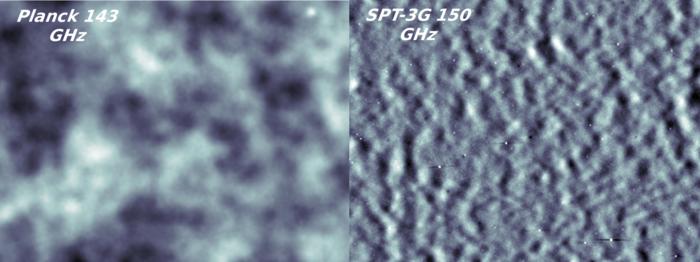The early 2000s marked a period of rapid advancements in our understanding of the cosmos, thanks to the growth of cosmic observations, measurement tools, and the discovery of dark matter and dark energy. However, a small “glitch” emerged in the form of a discrepancy between two methods of calculating the Hubble parameter, which describes the universe’s expansion. This “cosmological tension” has proven challenging to resolve, even with more precise calculations and measurements.
Two Paths to Calculating the Hubble Parameter
The Hubble parameter can be calculated using two methods: astrophysical observations of nearby celestial bodies and calculations based on data from the cosmic microwave background (CMB), a faint and distant radiation from the early universe. Initially, these two sources provided consistent values of H0, but around 2013, researchers realized that the “numbers didn’t add up.”
“The discrepancy that emerged might seem small, but given that the error bars on both sides are becoming much smaller, this separation between the two measurements is becoming large,” explains Khalife, one of the researchers involved in the study.
The Planck Experiment: Confirming the Discrepancy
The Planck satellite, launched in 2007 to gather a detailed image of the CMB, confirmed the discrepancy was real, turning a moderate concern into a significant crisis. The most recent and near sections of the universe seem to obey different physics than the oldest and most distant ones, an unlikely possibility.
Testing Alternative Models and Extensions to ΛCDM
If the issue is not with measurements, it could be a flaw in the current accepted theoretical model, called ΛCDM, which is largely based on General Relativity. Various alternative models and extensions to ΛCDM have been proposed, but none have proven convincing in significantly reducing the tension.
Khalife and his colleagues tested 11 of these models using analytical and statistical methods on different sets of data, including the most recent results from the SH0ES and SPT-3G collaborations. Three models were excluded by the new data, while three others seemed capable of reducing the tension, but only because they have very large error bars and make uncertain predictions.
Narrowing the Path for Future Models
“We found that those could reduce the tension in a statistically significant way, but only because they have very large error bars and the predictions they make are too uncertain for the standards of cosmology research,” says Khalife. “There is a difference between solving and reducing: these models are reducing the tension from a statistical point of view, but they’re not solving it.”
This work could serve as a base for future models, and by constraining them with increasingly precise data, researchers could move closer to developing a new model for our universe. “From our test we now know which are the models that we should not look at to solve the tension,” concludes Khalife, “and we also know the models that we might be looking at in the future.”
If our reporting has informed or inspired you, please consider making a donation. Every contribution, no matter the size, empowers us to continue delivering accurate, engaging, and trustworthy science and medical news. Independent journalism requires time, effort, and resources—your support ensures we can keep uncovering the stories that matter most to you.
Join us in making knowledge accessible and impactful. Thank you for standing with us!

